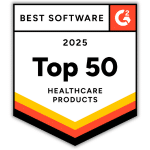Three Must-Haves for Every OSHA Healthcare Compliance Manual
We’ve prepared a list of three must-haves that every OSHA compliance manual for medical or healthcare facilities should have. While not designed to be a comprehensive list, it will give direction to help you evaluate your current OSHA program or regulatory manual for healthcare compliance.
Tackle Medical-Specific Hazards
OSHA has oversight of nearly all worksites in America. As a result, the agency has safety guidelines for almost every industry, including healthcare. These guidelines are developed based on working conditions and the hazards that employees might face in each one.
One example is the ionizing radiation standard. The standard is written for all employees who could be exposed to X-rays or other forms of ionizing radiation. But if your workplace does not have devices that produce ionizing radiation, you would not need to follow the requirements of this standard.
With that in mind, OSHA guidelines for healthcare workers should be included in almost every OSHA compliance manual for medical facilities.
- Bloodborne Pathogen Standard – Employers are subject to OSHA’s Bloodborne Pathogens standard if they have employees whose jobs put them at reasonable risk of coming into contact with blood or other potentially infectious materials. Employers subject to this standard must develop a written exposure control plan, provide training to exposed employees, and comply with other standard requirements.
- Ionizing Radiation Standard – This standard applies to facilities with an x-ray machine. It requires affected employers to conduct a survey of the types of radiation used in the facility, including x-rays, to designate restricted areas to limit employee exposure and to require employees working in designated areas to wear personal radiation monitors. In addition, radiation areas and equipment must be labeled and equipped with caution signs.
- Personal Protective Equipment (PPE) – In medical settings, PPE is closely associated with the bloodborne pathogen standard as a way of limiting employee exposure. Employers must assess each operation in their workplace to determine if their employees are required to wear PPE, such as masks and gloves. Note that engineering controls and work practices are the preferred methods for protecting employees – OSHA generally considers PPE the least desirable means of controlling employee exposure.
- Other Hazards
- Healthcare worksites using compressed gases must also address the risk posed by these substances. OSHA nitrous oxide exposure and oxygen are two examples.
- Many providers offer in-office laser therapy or surgery, which means the hazards posed by these devices must be addressed.
- Latex allergies by employees and clients must also be addressed and mitigated.
Identify and Address General Hazards
Many of the hazard preventions in this category are requirements for all workplaces. The vital thing to consider is whether your healthcare workplace has unique factors requiring extra mitigation measures or steps to meet the OSHA requirements.
- Hazard Communication Standard – This standard is designed to ensure that employers and employees know about hazardous chemicals in the workplace and how to protect themselves. Employers with employees who may be exposed to hazardous chemicals in the workplace must prepare and implement a written Hazard Communication Program and comply with other standard requirements. This would include all chemicals used in healthcare workplaces, including cleaners and disinfectants. This is one of the most common OSHA violations in healthcare found during inspections.
- Electrical Standards – Electrical hazards, such as wiring deficiencies, are among the most frequently cited by OSHA. OSHA’s electrical standards include design requirements for electrical systems and safety-related work practices. If you use flammable gases, you may need special wiring and equipment installation.
- Medical and First Aid Standard – OSHA requires employers to provide medical and first-aid personnel and supplies commensurate with workplace hazards. The details of a workplace medical and first-aid program are dependent on the circumstances of each workplace and employer.
- Exit Routes Standard/Emergency Action Plan Standard/Fire Safety Standard – All employers must comply with OSHA’s requirements for exit routes in the workplace. OSHA recommends that all employers have an Emergency Action Plan and a Fire Prevention Plan.
- Ergonomic Hazards – Some significant ergonomic stressors in healthcare workplaces include lifting and repositioning patients and lifting materials.
- Workplace Violence – Healthcare workers face a significant risk of job-related violence. OSHA encourages employers to establish violence prevention programs and to track their progress in reducing work-related assaults.
- Slips, Trips, and Falls – Slips, trips, and falls are among healthcare facilities’ leading causes of injuries.
Train, Train, Train
Regulations demand annual OSHA training for healthcare professionals who could be exposed to workplace hazards. The training must be accurate, credible, and practical to the material covered.
Practical training should also be specific to each workplace’s unique situations and policies. This is something that OSHA and HIPAA have in common.
Requirements, Recording, and Reporting
OSHA regulations have specific requirements for all workplaces that must be followed, including the placement of federally required OSHA information posters in locations accessible to all employees.
An OSHA compliance manual for healthcare facilities must also maintain all records of training, exposure, and other incidents required by the regulations.
Compliancy Group’s software tool helps medical organizations achieve OSHA compliance. We help you simplify OSHA compliance, and can also help you meet HIPAA requirements using a single software platform.








